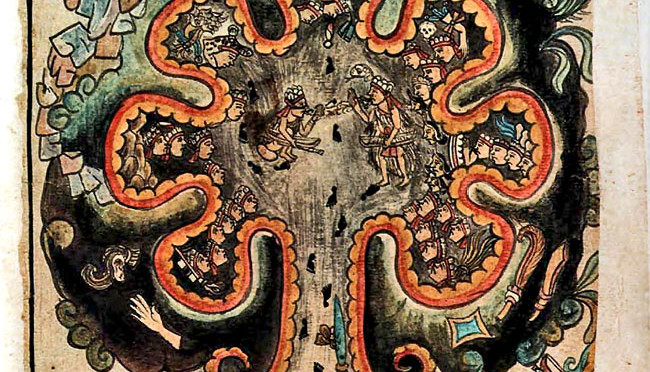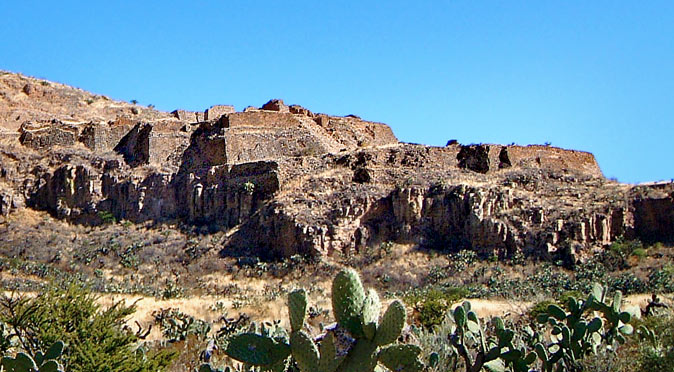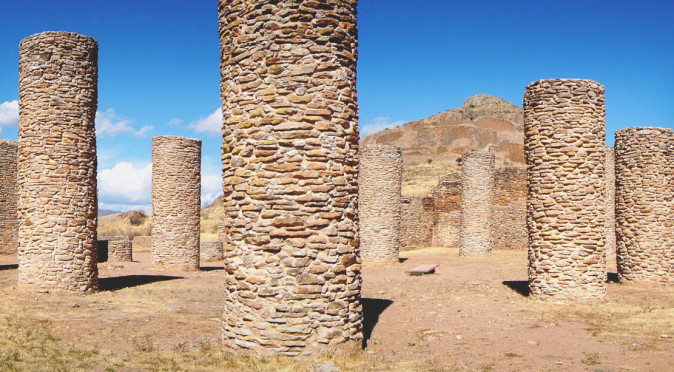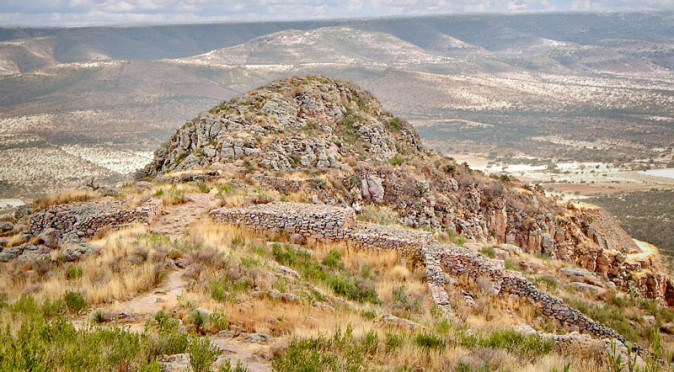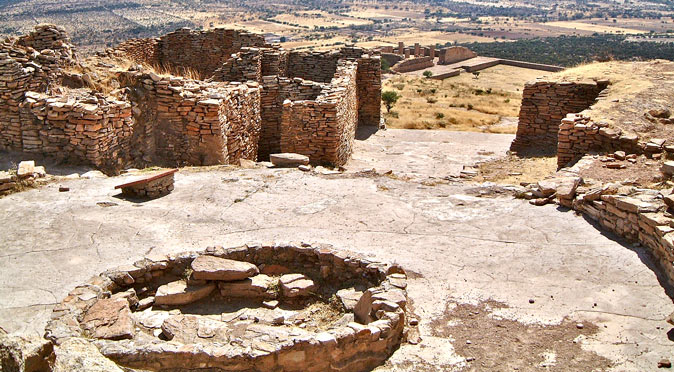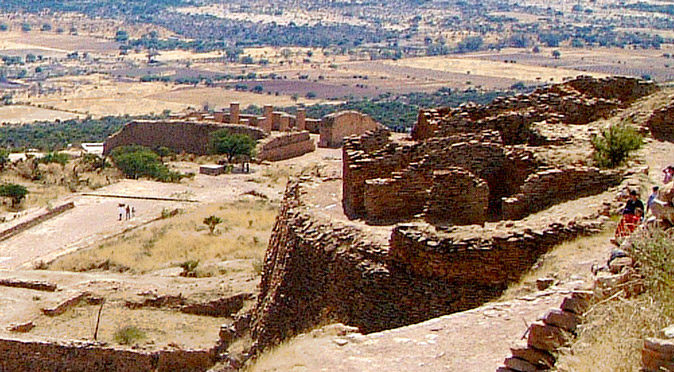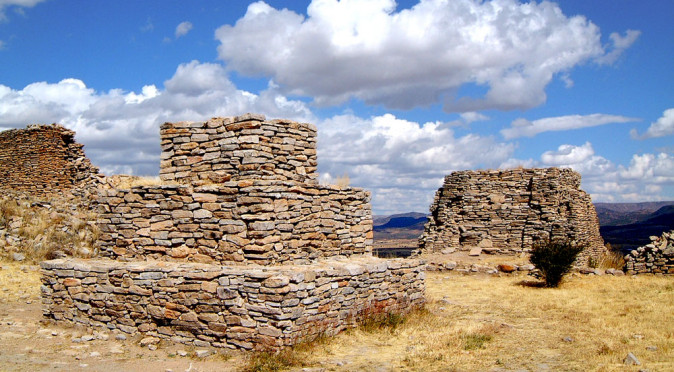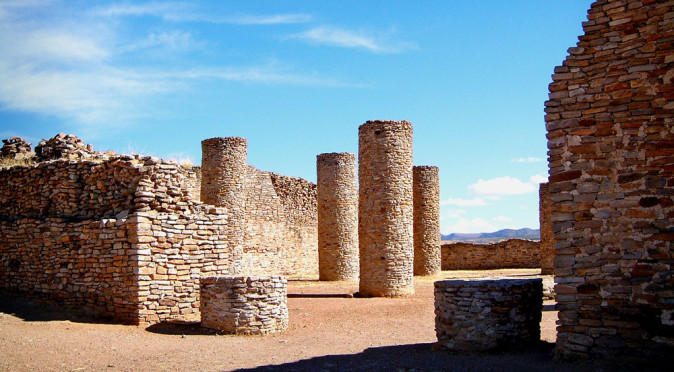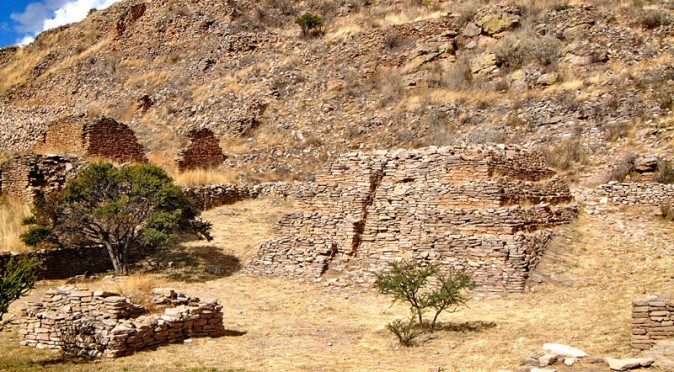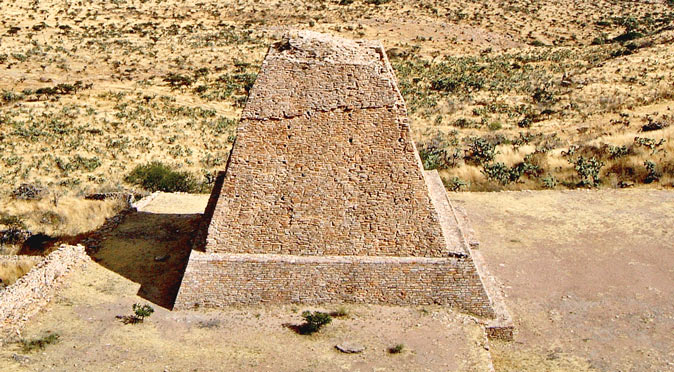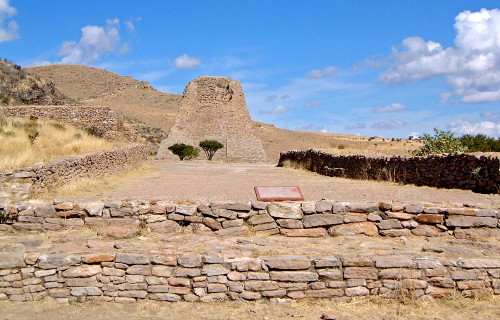
W0155: Ballcourt and Votive PyramidThe Ball Court at La Quemada is unusually placed to create a thoroughfare between its two most iconic religious spaces. At the southern end is the Hall of Columns (Salón de las Columnas) and at the north end is the Votive Pyramid (Pirámide Votiva), which is deliberately aligned with the ball court (see fig. W0155). The Ball Game was played by all ancient Mesoamerican cultures and was often central to their religious and political systems. The game was played by bouncing a rubber ball up and down the court between two teams, who had to try and keep the ball elevated – it is thought to be symbolic of keeping the sun alive. The game was pioneered by the Olmec culture who came to prominence in around 1600BC and lived in a region dense with rubber trees. By incising the trunk of the rubber tree, they were able to drain the sap and create latex that could be fashioned into balls. With the balls weighing as much as 10kg, the game was often a deadly affair and so it took on a deeply religious meaning with the players being likened to holy-warriors. In some areas, the game was also used to settle political disputes in place of war, with the losers being sacrificed to the Gods.
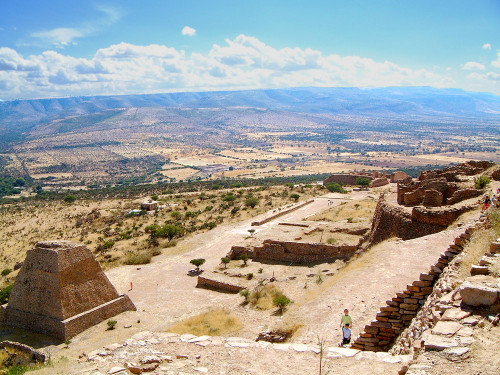
W0159: Votive Pyramid, Ball Court & Hall of Columns The Ball Court at La Quemada is one of the few associations the city has with the civilisations of the Mesoamerican heartland to the south. Its placement between the Hall of Columns and the Votive Pyramid demonstrates that it had great religious importance and that it was intended for people to walk through it. Symbolic ball-courts have been found in a number of Mesoamerican cities and this court may also have served a ritual purpose, with the dead bodies of the sacrificed being carried from the Votive Pyramid through the court and on to the Hall of Columns (in fig, W0159 you can just about see the long straight wall of the ball court starting halfway between the Votive Pyramid and the Hall of Columns, where it terminates). Equally, the losers of the game may have been marched straight to the Votive Pyramid to be sacrificed (although in some cases it was the winners who won the right to be sacrificed). It is also worth noting that the Ball Court creates an avenue from the Votive Pyramid which is slightly off of true North/South by 14º. This is very similar to the Avenue of the Dead at Teotihuacan and is surely deliberate as most of the temples and patios follow this alignment or an East/West alignment that runs perpendicular to it.
Whilst the Ball-Court plays a key role within the complex religious symbolism and cosmological alignments of La Quemada, it was most likely an active ball game arena as well. The court is 70 metres long and 15 metres wide and appears to have had a temple built along the western wall from which the religious leaders could look on and adjudicate.

